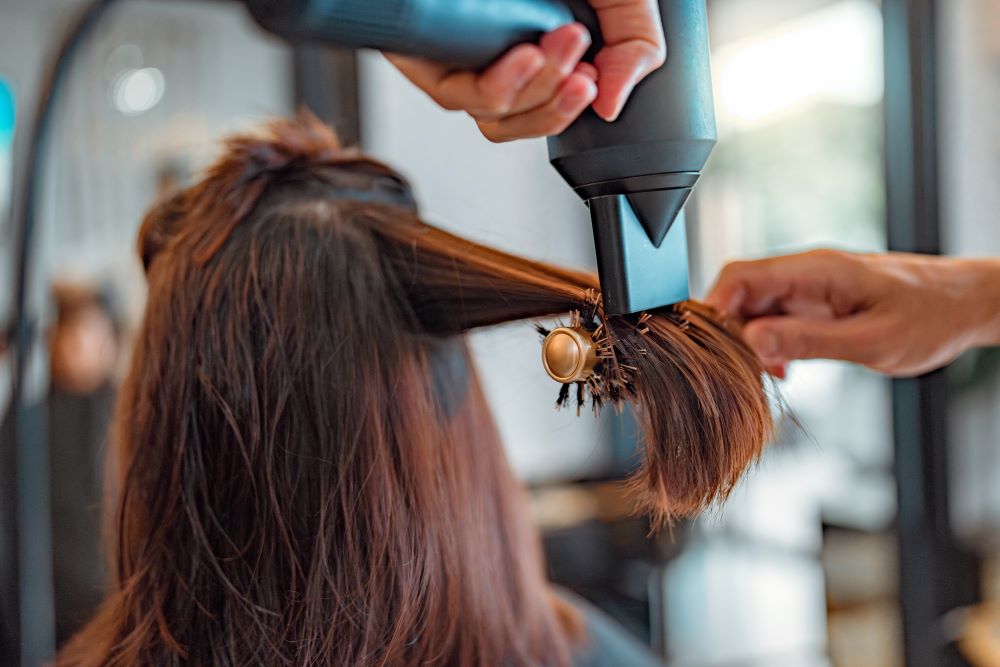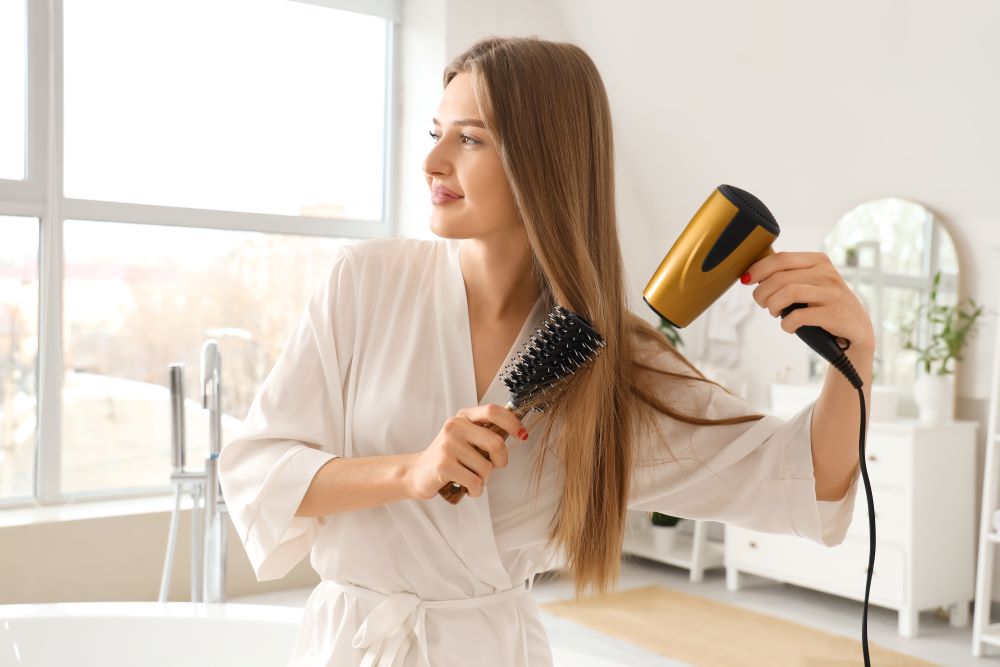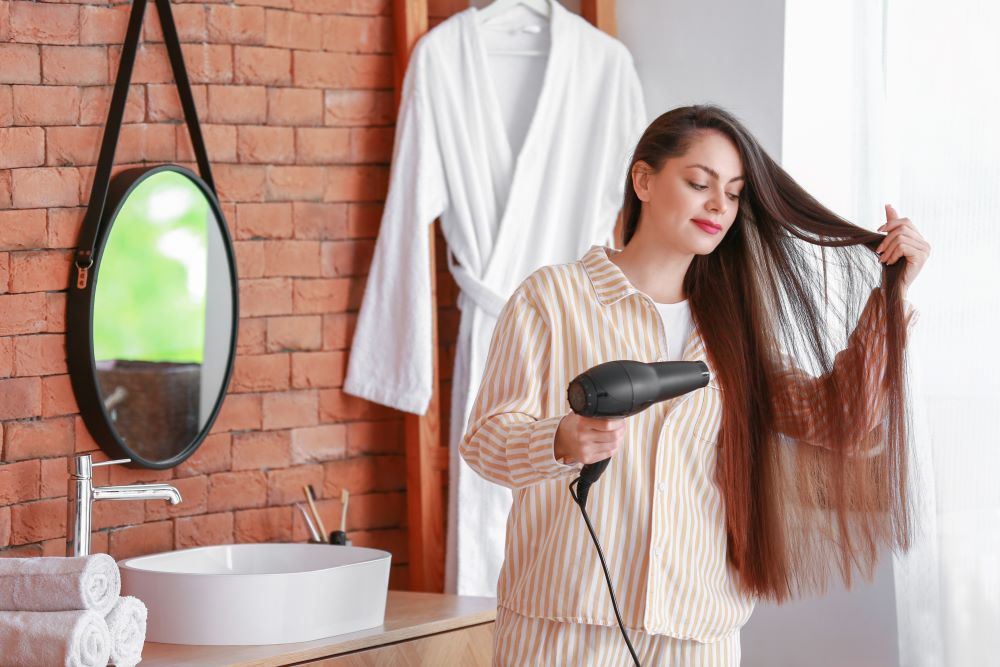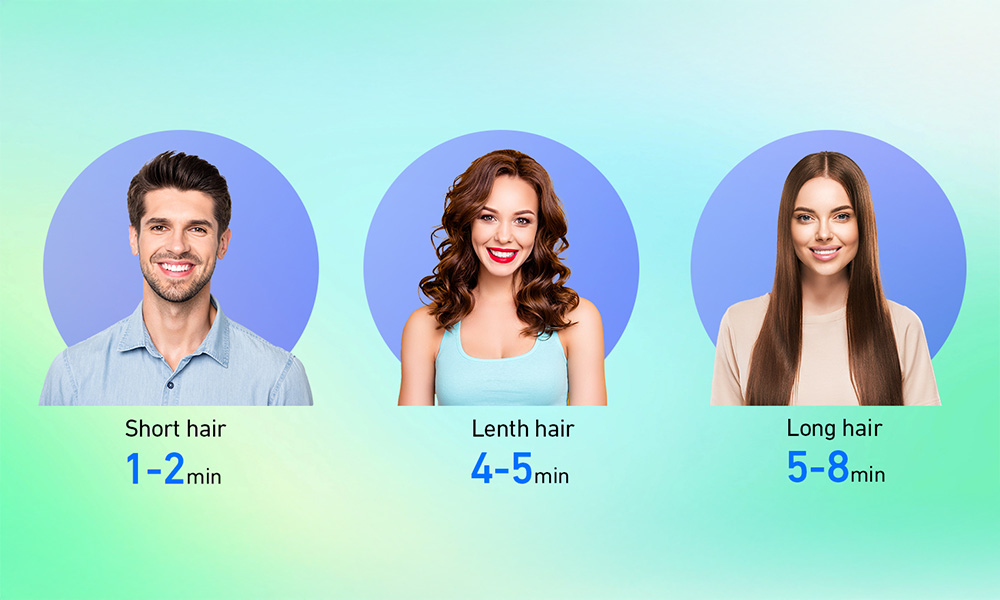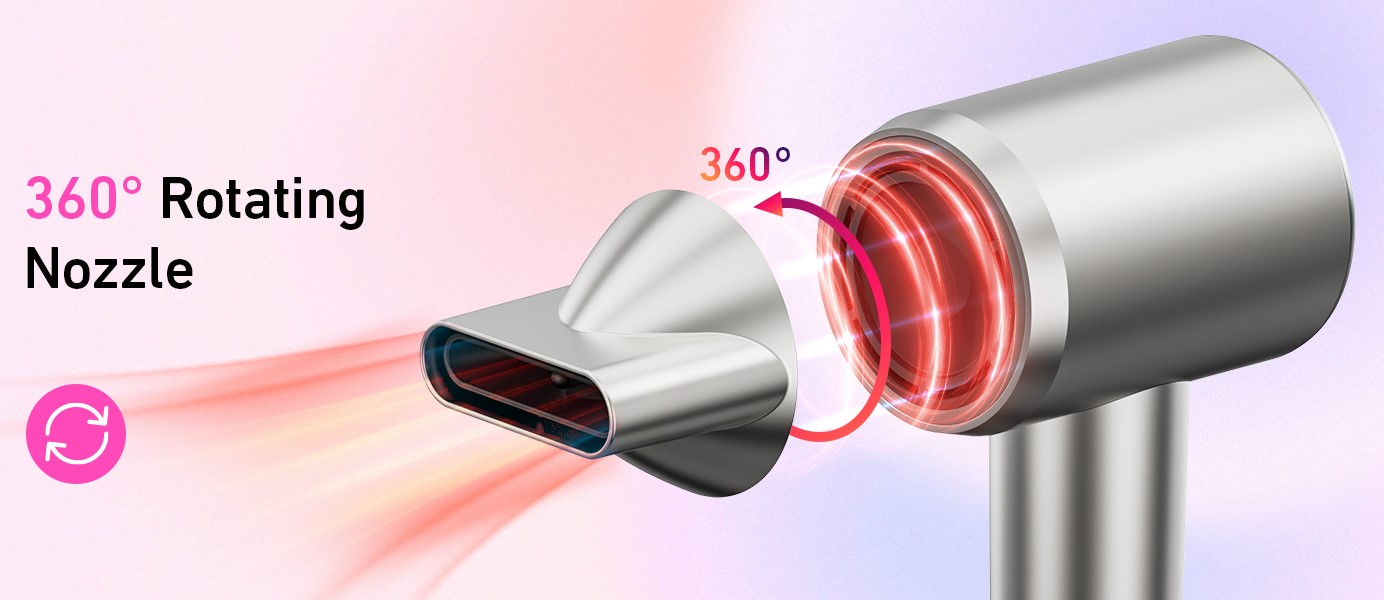
- Home
- Hair Dryer
- How-to Guides
- How to Choose the Right Hair Brush for Your Hair Type
How to Choose the Right Hair Brush for Your Hair Type
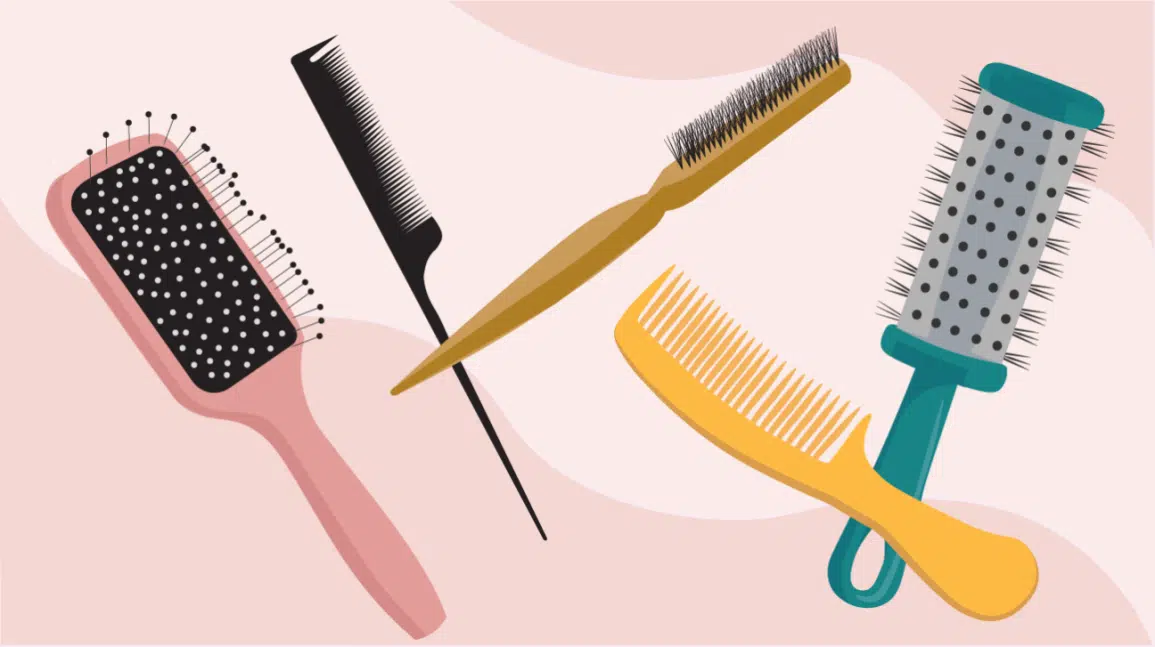
Choosing the right hair brush is crucial for maintaining healthy and beautiful hair. The right brush can enhance your hair’s natural shine, reduce breakage, and make styling easier. However, with so many options available, finding the perfect brush for your hair type can be overwhelming. This guide will help you understand the different types of hair brushes and how to choose the best one for your specific hair type.
Understanding Different Types of Hair Brushes

Before diving into which hair brush is best for your hair type, it’s important to understand the different types of hair brushes available. Each type serves a specific purpose and is designed to work best with certain hair textures and styles.
1. Paddle Brushes
Paddle brushes have a wide, flat surface, making them ideal for detangling and smoothing hair. They are great for those with long, straight hair and can help reduce static and frizz.
2. Round Brushes
Round brushes come in various sizes and are typically used for styling. Smaller round brushes are perfect for creating curls and adding volume, while larger ones are great for straightening and smoothing hair.
3. Vent Brushes
Vent brushes have holes or vents in the base, allowing air to pass through during blow-drying. This design speeds up the drying process and adds volume to the hair. Vent brushes are suitable for all hair types.
4. Boar Bristle Brushes
Boar bristle brushes are made from natural boar hair and are known for their ability to distribute natural oils from the scalp throughout the hair. This helps add shine and reduce frizz. They are ideal for those with fine or thin hair.
5. Synthetic Brushes
Synthetic brushes, made from materials like nylon, are durable and great for detangling. They can be used on wet or dry hair and are suitable for all hair types.
6. Mixed Bristle Brushes
Mixed bristle brushes combine boar and synthetic bristles, offering the benefits of both. They provide gentle detangling while distributing natural oils, making them suitable for most hair types.
Choosing the Right Brush for Your Hair Type
Selecting the appropriate brush for your hair type is crucial in maintaining the health, shine, and manageability of your hair. Different hair types have unique needs, and using the right brush can help you achieve your desired style while minimizing damage. Here’s a detailed guide to help you choose the right brush for your specific hair type.
Fine or Thin Hair
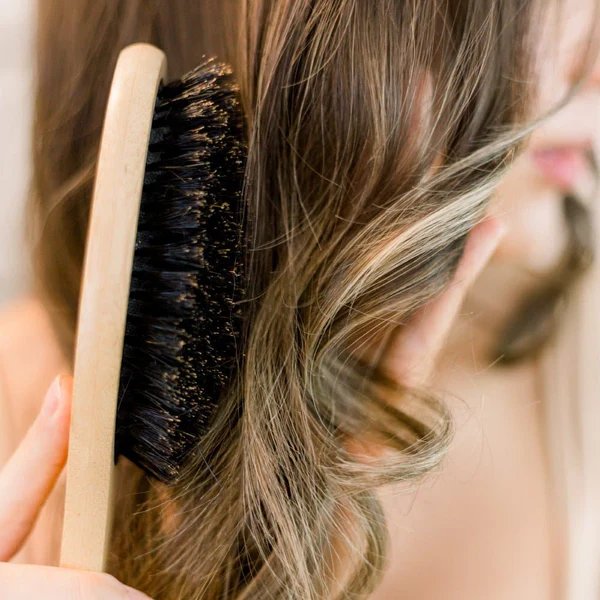
If you have fine or thin hair, you need a brush that can add volume and shine without causing breakage. Boar bristle brushes are an excellent choice for this hair type. The soft bristles help distribute natural oils from your scalp throughout your hair, which adds shine and reduces the need for frequent washing. Boar bristle brushes are gentle on fine hair, preventing breakage and damage. Avoid brushes with hard bristles as they can be too harsh on delicate strands.
Recommended Brushes:
Boar Bristle Brush: This brush helps distribute natural oils, adds shine, and reduces breakage. It is gentle enough for fine hair and promotes healthy, shiny strands.
Soft Paddle Brush: A paddle brush with soft bristles can detangle fine hair without pulling or causing damage.
Thick or Coarse Hair

Thick or coarse hair requires a brush that can handle its density and texture. A paddle brush is ideal for detangling thick hair without causing breakage. The wide surface area of a paddle brush allows it to glide through dense hair, making detangling easier. For styling, a round brush with a larger barrel is perfect for smoothing and straightening thick hair. It helps create a polished look while managing the volume and texture.
Recommended Brushes:
Paddle Brush: Ideal for detangling thick hair, a paddle brush can handle the volume and density of coarse strands without causing breakage.
Large Round Brush: For styling, a large round brush helps in straightening and smoothing thick hair, giving it a sleek, polished finish.
Curly Hair

Curly hair is prone to tangles and frizz, so it requires a brush that can detangle without disrupting the curl pattern. A wide-tooth comb is perfect for detangling wet curly hair. It gently separates the curls without causing breakage. For dry hair, a boar bristle brush is beneficial as it helps distribute oils from the scalp, adding shine and reducing frizz. Avoid brushes with fine or hard bristles that can cause frizz and breakage in curly hair.
Recommended Brushes:
Wide-Tooth Comb: Best for detangling curly hair when it’s wet. It gently separates curls and prevents breakage.
Boar Bristle Brush: For dry hair, this brush adds shine and reduces frizz without disrupting the natural curl pattern.
Wavy Hair

Wavy hair benefits from brushes that can enhance its natural wave pattern. A paddle brush is great for detangling wavy hair without causing frizz. For styling, a medium-sized round brush can help define and smooth waves, adding volume and shape during blow-drying. This combination helps maintain the natural texture of wavy hair while providing control and smoothness.
Recommended Brushes:
Paddle Brush: Excellent for detangling wavy hair, a paddle brush reduces frizz and maintains the wave pattern.
Medium Round Brush: For styling, this brush helps define and smooth waves, giving them a polished, voluminous look.
Straight Hair

For straight hair, a paddle brush is perfect for detangling and smoothing. The wide surface area of the brush allows it to cover more hair with each stroke, making detangling easier and faster. If you want to add volume, a vent brush used with a blow-dryer can help lift the roots and add body to straight hair. This combination ensures that straight hair remains sleek and smooth while also providing options for added volume and body.
Recommended Brushes:
Paddle Brush: Ideal for detangling and smoothing straight hair. It helps keep the hair sleek and manageable.
Vent Brush: When used with a blow-dryer, this brush adds volume and body to straight hair by lifting the roots.
Damaged or Fragile Hair
Damaged or fragile hair needs a gentle touch to prevent further breakage. A boar bristle brush or a soft-bristled synthetic brush is ideal for this hair type. These brushes are gentle on the hair and help distribute natural oils, adding shine and reducing the need for frequent washing. Avoid using brushes with hard bristles or metal pins, as they can exacerbate damage and cause breakage.
Recommended Brushes:
Boar Bristle Brush: Gentle and effective, this brush helps distribute natural oils and adds shine, making it ideal for damaged or fragile hair.
Soft Synthetic Brush: This brush reduces stress on damaged hair and helps prevent breakage, ensuring your hair remains as healthy as possible.
Tips for Using Hair Brushes
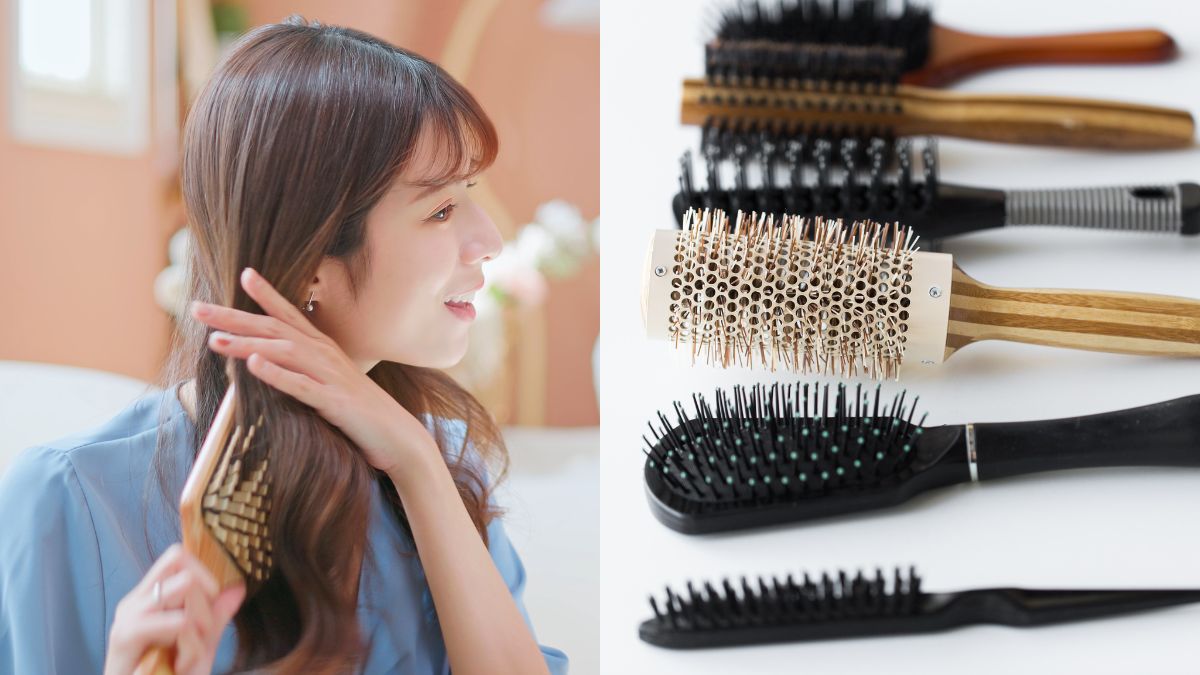
Using hair brushes effectively can make a significant difference in the health and appearance of your hair. Here are some practical tips to ensure you’re getting the most out of your hair brushing routine.
1. Use the Right Brush for the Right Job
Different brushes serve different purposes. Use a detangling brush for untangling knots, a styling brush for blow-drying, and a smoothing brush for finishing. This approach prevents unnecessary damage and helps you achieve the desired look.
2. Brush Gently
Always brush your hair gently, starting from the ends and working your way up to the roots. This method helps prevent breakage and reduces stress on your hair.
3. Clean Your Brushes Regularly
Dirty brushes can accumulate product residue, oil, and dirt, which can transfer back to your hair. Clean your brushes regularly by removing hair and washing them with mild shampoo and water to keep them in good condition.
4. Avoid Brushing Wet Hair
Wet hair is more fragile and prone to breakage. Use a wide-tooth comb or a brush designed specifically for wet hair to detangle gently. Avoid using regular brushes on wet hair to prevent damage.
5. Replace Old Brushes
Over time, brushes can wear out and become less effective. Replace your hair brushes regularly to ensure they remain in good condition and continue to benefit your hair.
Conclusion
Choosing the right hair brush for your hair type can make a significant difference in your hair’s health, shine, and manageability. Whether you have fine, thick, curly, or straight hair, there’s a perfect brush out there for you. By understanding your hair’s needs and selecting the appropriate brush, you can enhance your hair care routine and achieve beautiful, healthy hair.
Remember to use your brushes correctly, clean them regularly, and replace them when necessary. With the right tools and techniques, you can keep your hair looking its best every day.
Popular Post

Ultimate Guide to Using a Hair Dryer with Nozzle for Styling
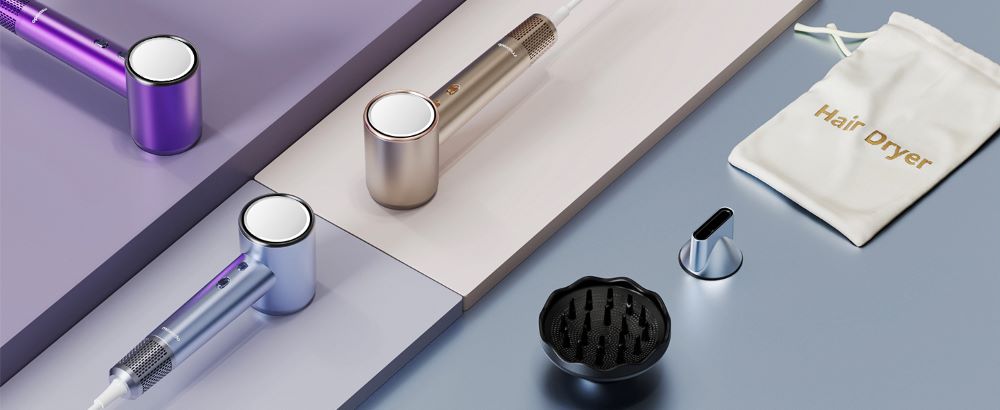
The Benefits of Using a Hair Dryer with a Diffuser
